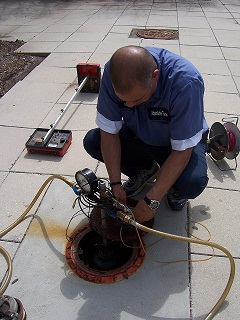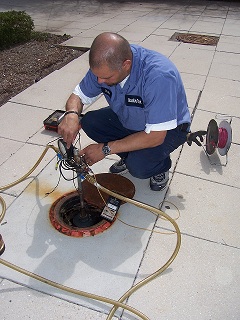
 | |
TESTING
At Absolute Tank Testing we specialize in handling all your underground and aboveground fuel tank testing needs. One call puts all of these services at your fingertips…
Licensed and trained technicians perform all tank tightness testing, and other environmental services ensuring high quality performance. Each of our testing methods are 3rd party certified, EPA approved and accepted by the Connecticut DEP, Westchester County Health Department and the New York DEC.
- Results available within one hour with the NEW Horner EZY3 Locator Plus method.
- Soil samples, results available in 24-hour turn around time upon request, ETPH & NY Stars
- Thorough Tank Searches conducted for “suspected” underground oil tanks.
- Absolute Tank Testing can meet your schedule and coordinate testing with your home inspections.
 Tank & Line Tightness Testing
Tank & Line Tightness Testing
Absolute Tank Testing performs the Horner EZY3 Locator Plus non-volumetric tank test. This testing method has proven to be highly effective and most reliable on residential tanks. This testing method can provide results on the same day the test is conducted or within 24 hours of testing. This testing method can only be performed on tanks with a straight or direct fill pipes. This testing method would require access to the furnace therefore it may be necessary for the homeowner to be there. For underground gasoline and diesel tanks access to and shut down of the dispenser/pump will be required. As with all of our testing procedures a field screening of the soil for evidence of petroleum is included.
Soil Sampling/Testing
Absolute Tank Testing, Inc. will obtain three to four samples by means of hand borings from the perimeter the residential UST. Samples will be extracted at depths greater that the depth the bottom of the tank. If the tank is located under concrete or asphalt permission will be required from the homeowner to drill. The samples are then combined to form one composite sample, which will be sent to a State certified laboratory for analysis using EPA method ETPH (extractable total petroleum hydrocarbons) for Connecticut locations and the “NY Stars” EPA method 8021 & 8270 (volatiles & semi-volatiles) for New York locations. Results are usually available within three business days for Connecticut customers and five to seven business days for New York Customers. A quicker turn around time is available for an additional charge.
 Tank Locating
Tank Locating
A tank search can be performed when it cannot be determined if there is an underground tank on the property. One of our experienced environmental technicians will inspect the basement of the property for any indications of copper lines or piping that may be associated with an heating fuel system. An inspection of the exterior of the home is also performed to identify piping that may be associated with an underground storage tank. Employing a Gemini-3 two-box magnetometer the technician will then scan the perimeter of the home out approximately 10 to 20 feet. Should the magnetometer detect an object hand boring tools are used to determine approximate, positioning and depth to the top of the suspected tank. If a tank is found and access is available product level measurements will also be obtained.
Cathodic Protection Testing
Electrical currents flowing from a metallic structure, such as a steel tank, into the ground causes corrosion. Cathodic protection is a process that redirects this flow to prevent corrosion. Sacrificial anodes are installed at each end of a tank, (a sacrificial anode is a softer metal than the tank, either zinc or magnesium), this allows electrolysis of the soil to degrade the sacrificial anode as opposed to the tank. Testing is performed with a special type of voltmeter, which measures in millivolts to see if the system is performing within factory standards. All cathodic protection testing is be performed according to Steel Tank institute specifications as well as National Association of Corrosion Engineers (NACE) Standard RP-0285 Recommended Practice Control of External Corrosion on Metallic buried, partially buried, or submerged Liquid Storage Systems. In addition, testing is also conducted in accordance with the regulations of Connecticut State Agencies Section 22a-449(d)-1 “Control of the nonresidential underground storage and handling of oil and petroleum liquids”. A structure to soil test voltage reading of at least minus 0.85 volts measured between the structure and a copper-copper sulfate electrode must be maintained for proper system operations. Many new and recently installed underground steel tanks such as the STIp3 come with cathodic protection.